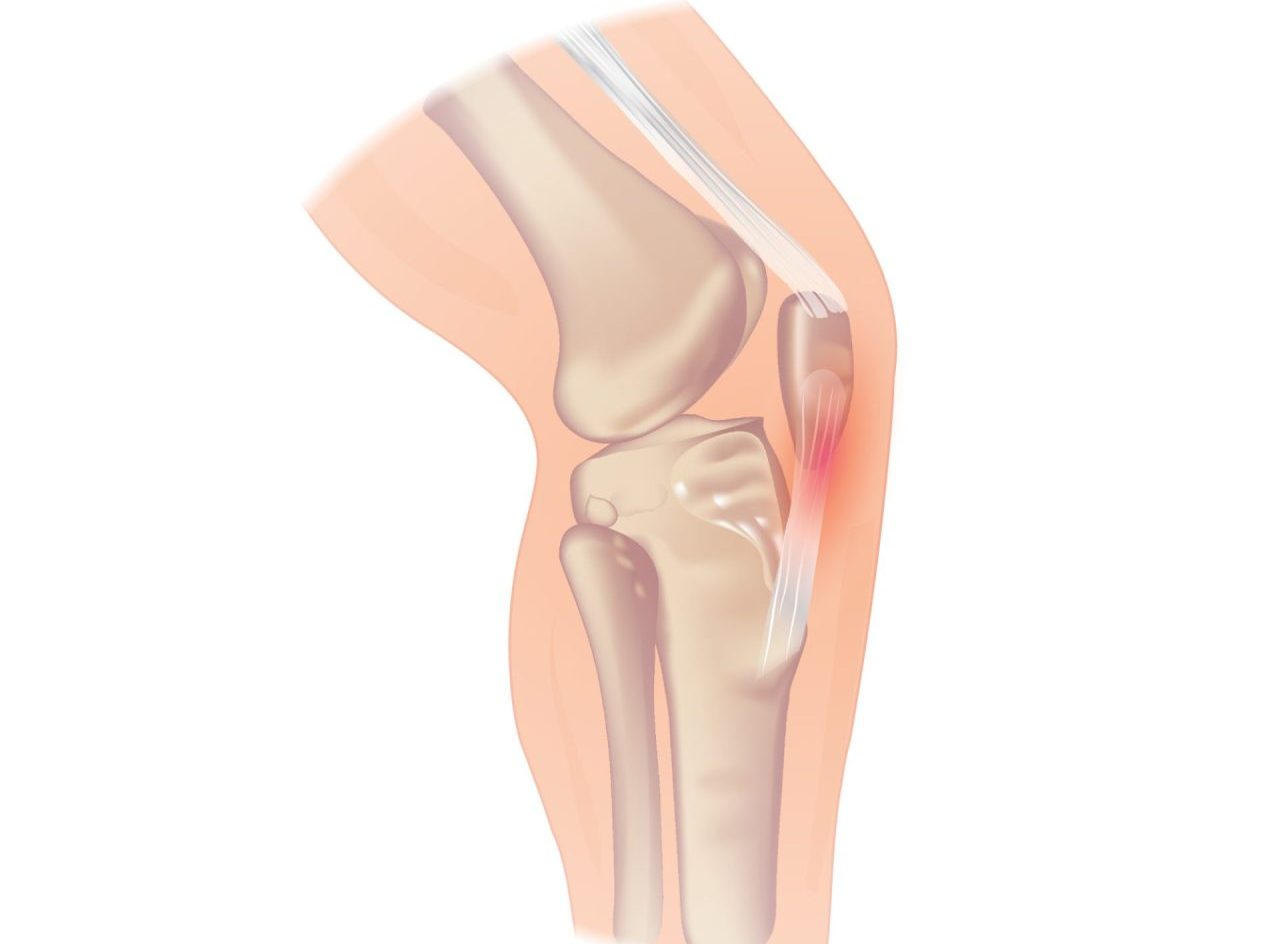Patellar tendinopathy, also known as jumper’s knee, is a common overuse injury that affects the patellar tendon, which connects the kneecap (patella) to the shinbone (tibia). This condition is often seen in athletes who engage in activities that require frequent jumping or explosive movements, such as basketball or volleyball.
Symptoms of patellar tendinopathy may include pain, tenderness, and stiffness in the front of the knee, particularly during or after activity. In more severe cases, there may be swelling or thickening of the patellar tendon, which can affect knee function and mobility.
Treatment for patellar tendinopathy typically involves a combination of physiotherapy, medications, and activity modification. The aim of treatment is to reduce pain and inflammation, promote healing, and restore normal function in the knee joint.
Applying the 5 stages of rehab to patellar tendinopathy and achieving the best possible outcome are as follows:
Pain and symptom management: The first stage of rehabilitation for patellar tendinopathy is aimed at reducing pain and inflammation. This may involve rest, ice, and over-the-counter pain medications such as acetaminophen or ibuprofen. In more severe cases, corticosteroid injections may be recommended to help reduce inflammation.
Range of motion: Once pain and inflammation are under control, the focus shifts to restoring normal range of motion in the knee joint. This may involve gentle mobilization, stretching exercises, and joint mobilization techniques to improve flexibility and reduce stiffness in the knee joint.
Motor control: In stage 3, the focus is on improving neuromuscular control around the knee joint. This includes exercises that target the muscles around the knee joint, as well as the hip and ankle muscles, to improve muscle strength, balance, and coordination. Proprioceptive training, which involves exercises that challenge balance and coordination, can also be beneficial in improving motor control.
Strengthening: In stage 4, the goal is to build strength in the muscles around the knee joint to improve stability and reduce the risk of reinjury. Resistance training, including exercises such as squats, lunges, and leg presses, can help to build muscle strength and endurance. Specific strengthening exercises for the patellar tendon, such as eccentric exercises, may also be prescribed to target the affected area.
Maintenance: In the final stage of rehab, the focus is on maintaining the gains achieved in the previous stages and preventing reinjury. This may involve continuing with regular exercise, including strengthening and proprioceptive training, as well as making any necessary modifications to daily activities or sports participation to reduce the risk of further injury.
In addition to physiotherapy, other treatments for patellar tendinopathy may include shockwave therapy or platelet-rich plasma (PRP) injections. In rare cases, surgery may be necessary to repair the patellar tendon.
It is important to seek treatment for patellar tendinopathy as soon as possible to prevent the condition from worsening and to promote a full recovery. Your physiotherapist can work with you to develop an individualized treatment plan based on your specific needs and goals, and can help you to achieve the best possible outcome.
For more information regarding Patella Tendinopathy please see:


